To be clear: I don’t believe in ghosts, I don’t care much for ghost stories, and I’ve never written about one for this blog. Still, if any of the places I’ve visited in the deep heart of France ever had a legitimate claim to harboring a ghost, it must surely be the lovely Chateau du Puymartin in the Périgord Noir, only 6 km (3.6 miles) from Sarlat-la-Canéda. Karen and I spent a pleasant morning there in June, and even though the site exploits the incredible story of “the White Lady” to the max, the castle is an interesting and rewarding place to visit for plenty of other reasons.
Puymartin – a castle with two lives
As with so many of the fortified châteaux in this part of France, much of Puymartin’s history is tied up in the Hundred Years War (1337-1453). The conflict was not so much between “France” and “England” as it was an ongoing blood feud between the kings of those two countries – and it wreaked havoc on the Dordogne in particular. That’s why you see so many great defensive chateaux like the ones at Beynac-et-Cazenac and Castelnaud-la-Chapelle – powerful centers that traded hands multiple times during the back-and-forth of the war.
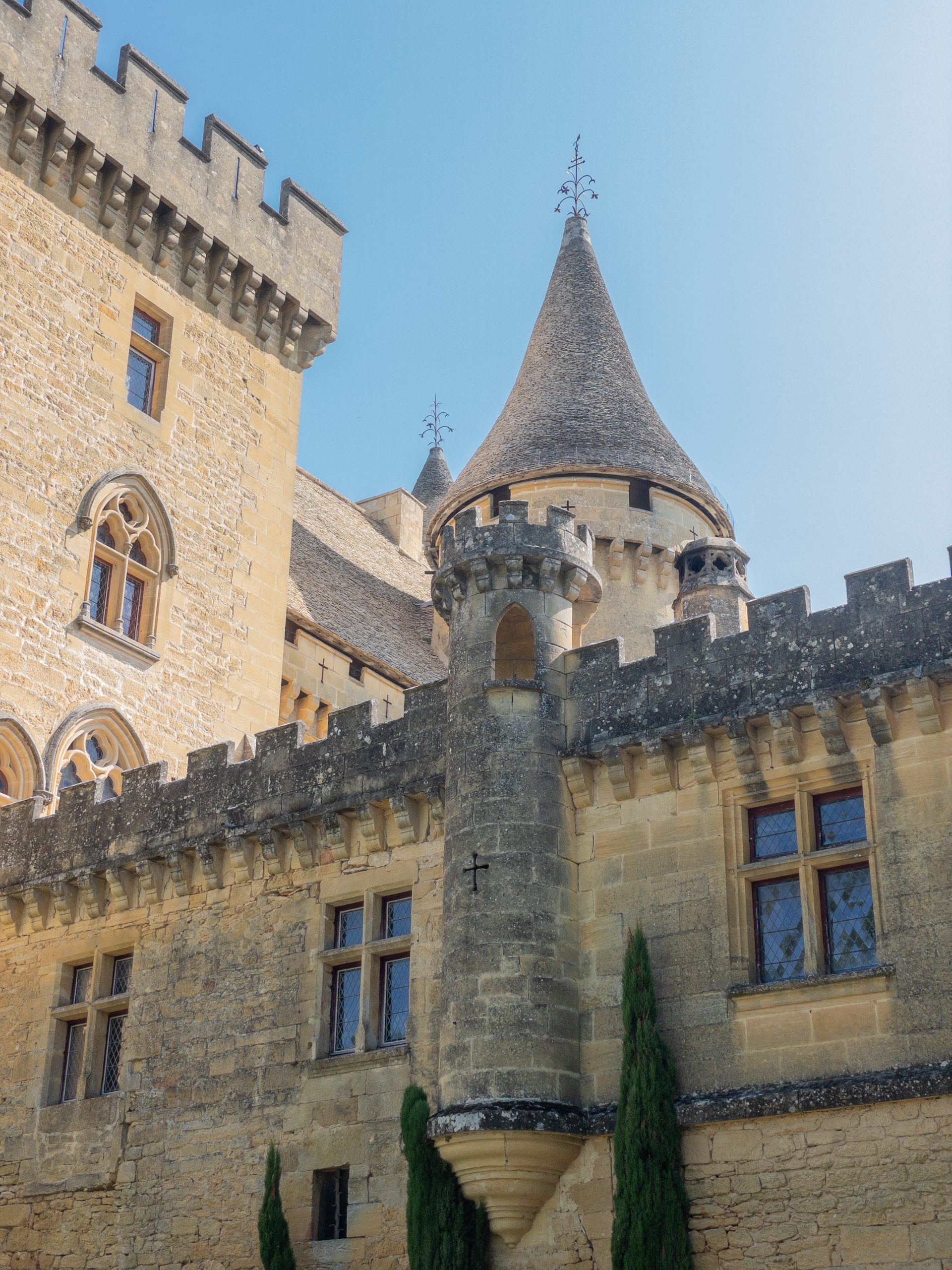
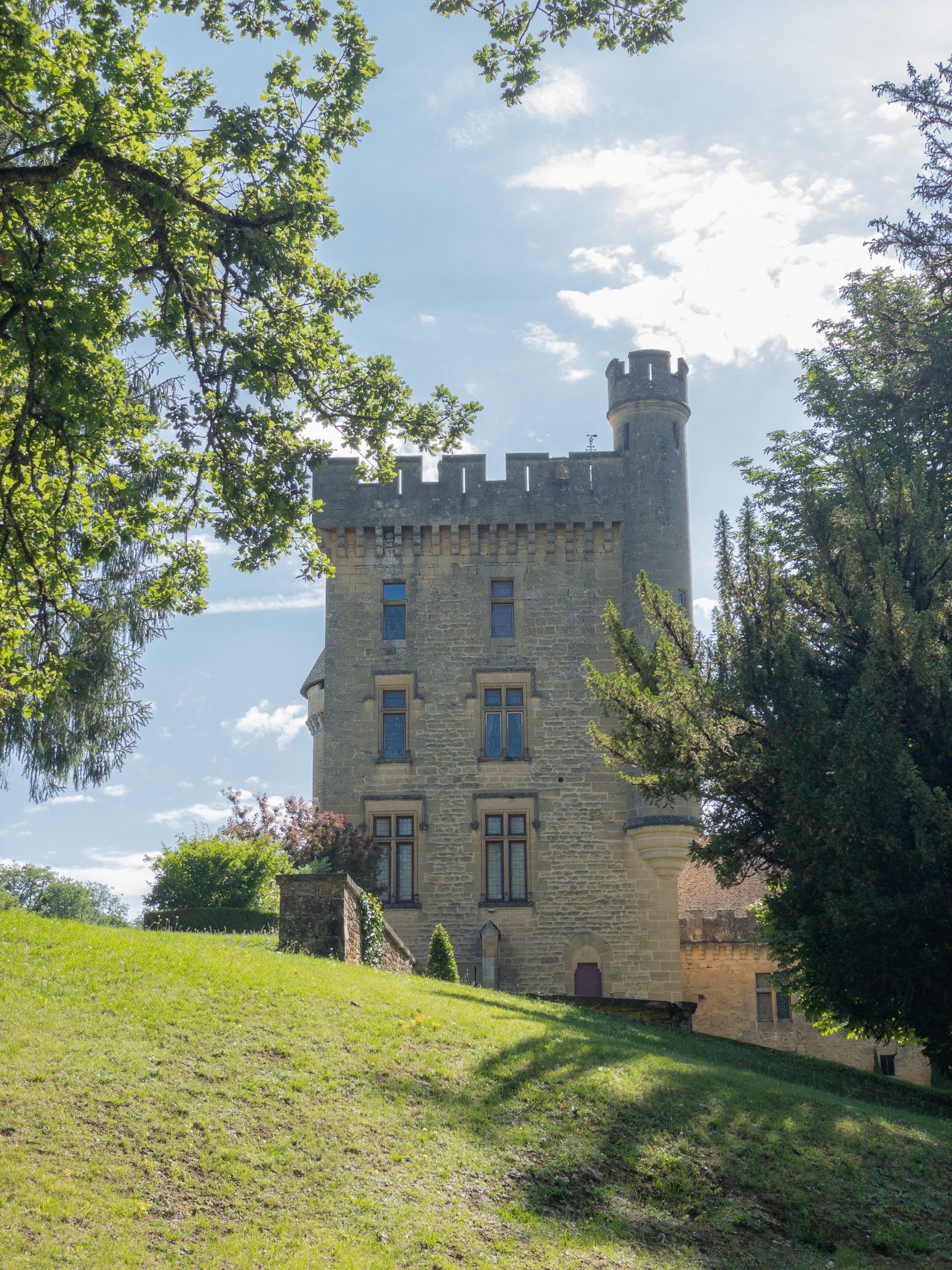
The castle at Puymartin paid a particularly heavy price because it was on the frontier between the territories claimed by England and France. Originally built in 1269 C.E., it fell under siege in 1357 and suffered (as the chateau’s website describes the action) “toutes sortes de vols, saccages, pillages” (“all manners of thefts, sacking, and pillaging”) at the hands of English mercenaries.
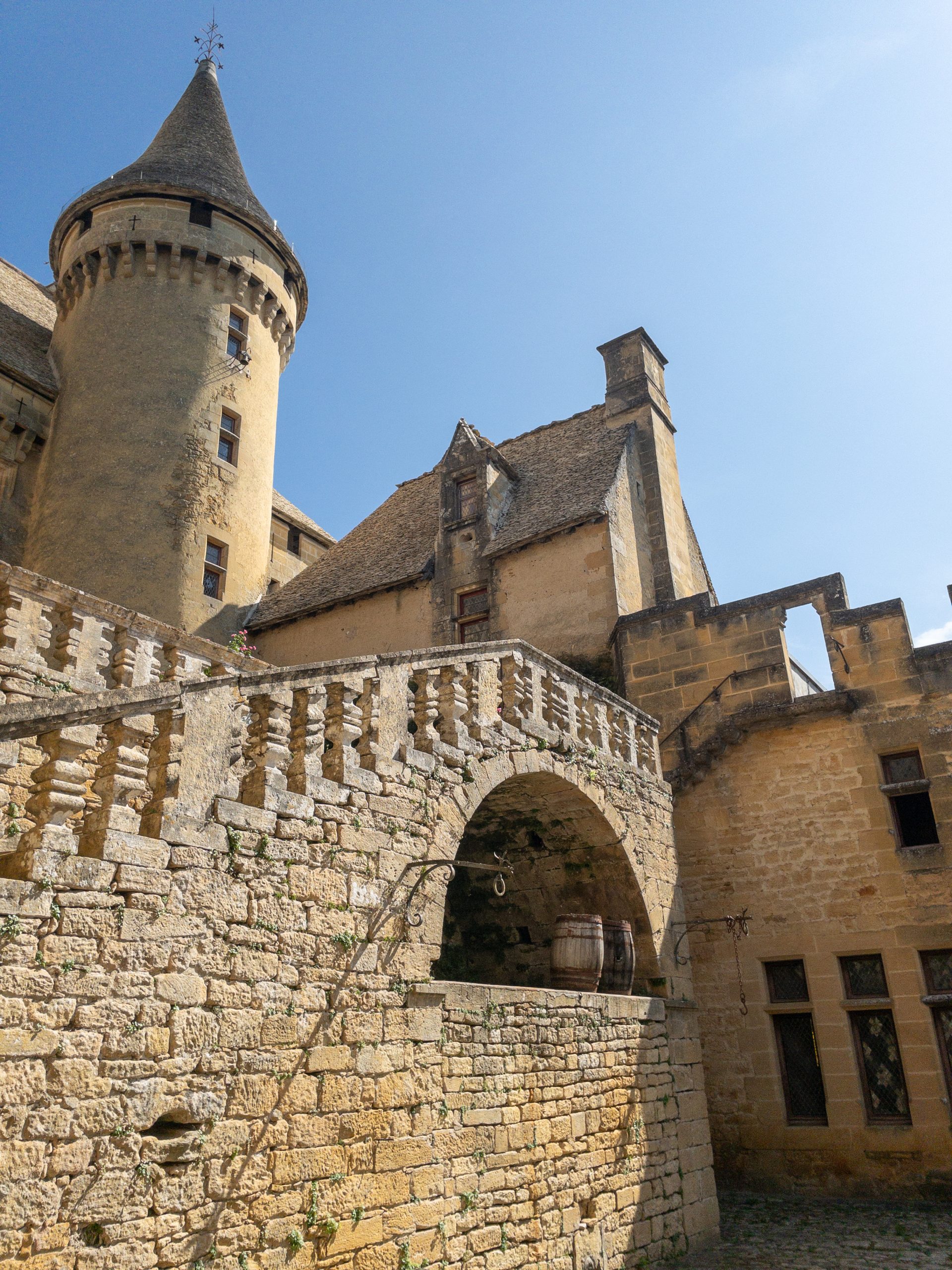
The violence here must have been especially troubling, especially in Sarlat, because the Consul there collected enough money to bribe the English troops to withdraw from Puymartin; when they were gone, the locals tore the castle apart to keep it from being used this way again. The stone ramparts were knocked down, walls and ceilings were torn apart, and floorboards were shredded, leaving nothing but ruins.
The chateau’s second life began in 1450, when a noble named Radulphe de Saint-Clar rebuilt the fortifications to blunt the power of the lords of the mighty castle at Commarque. Puymartin came under attack again during the Wars of Religion of the 16th century, but by then its Seigneur was established as a commander of Catholic forces and he successfully chased away all efforts by Hugenot troops to retake the castle.
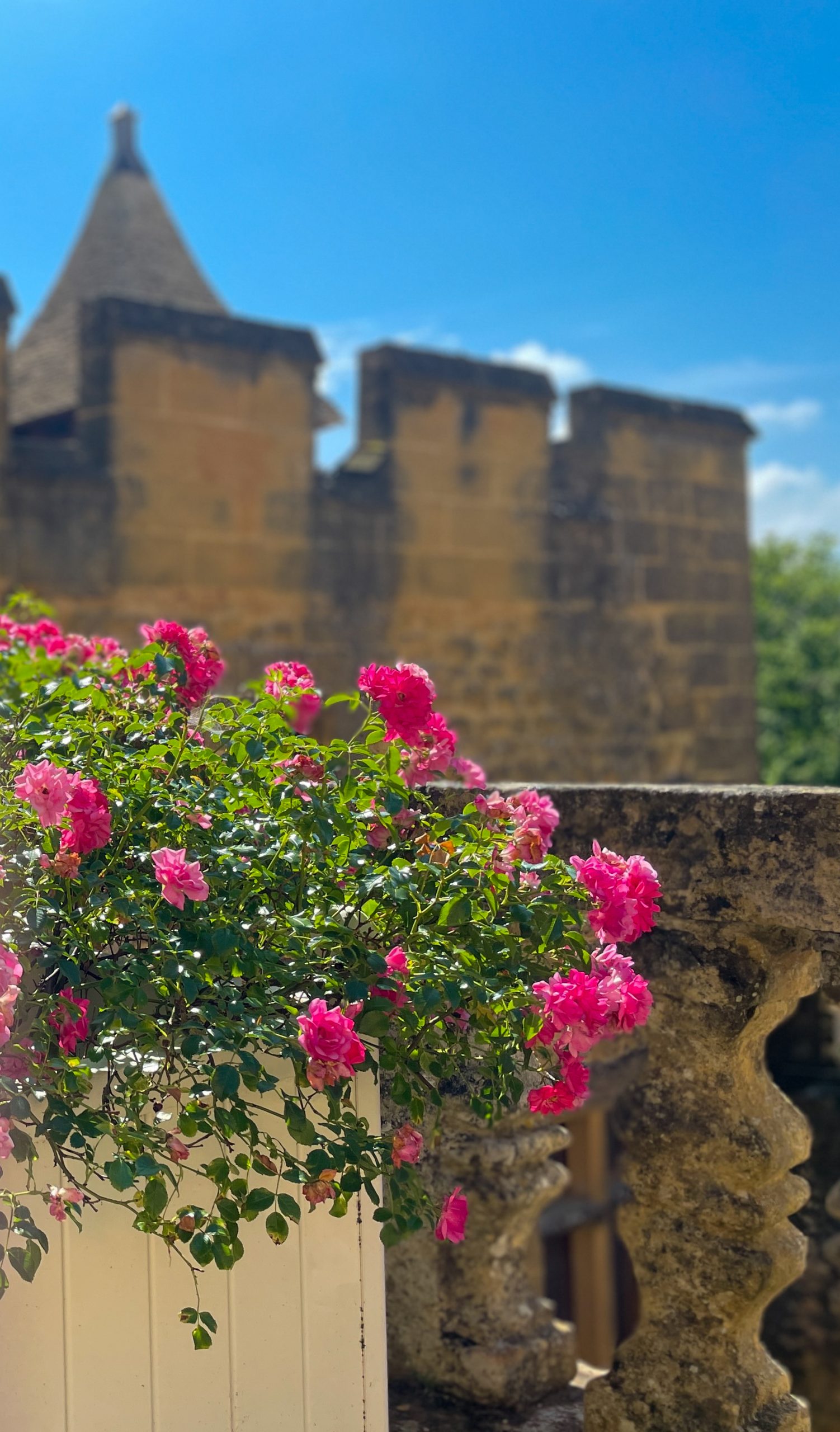
500 years of one family’s history
This “second life” of Puymartin is notable for the fact that the castle has remained in the hands of the same family for more than 500 years now. There was one kerfuffle that almost interrupted this remarkable lineage: for 40 years in the late 1600s, a brother and sister pushed back and forth trying to gain control of the property. The sister won and the castle remained in family hands. Perhaps more remarkably, though, the Marquis who owned the place during the French Revolution managed to hang on to this estate and three others without damage, although I can’t find any specific reason he might have escaped the general chaos of that period.
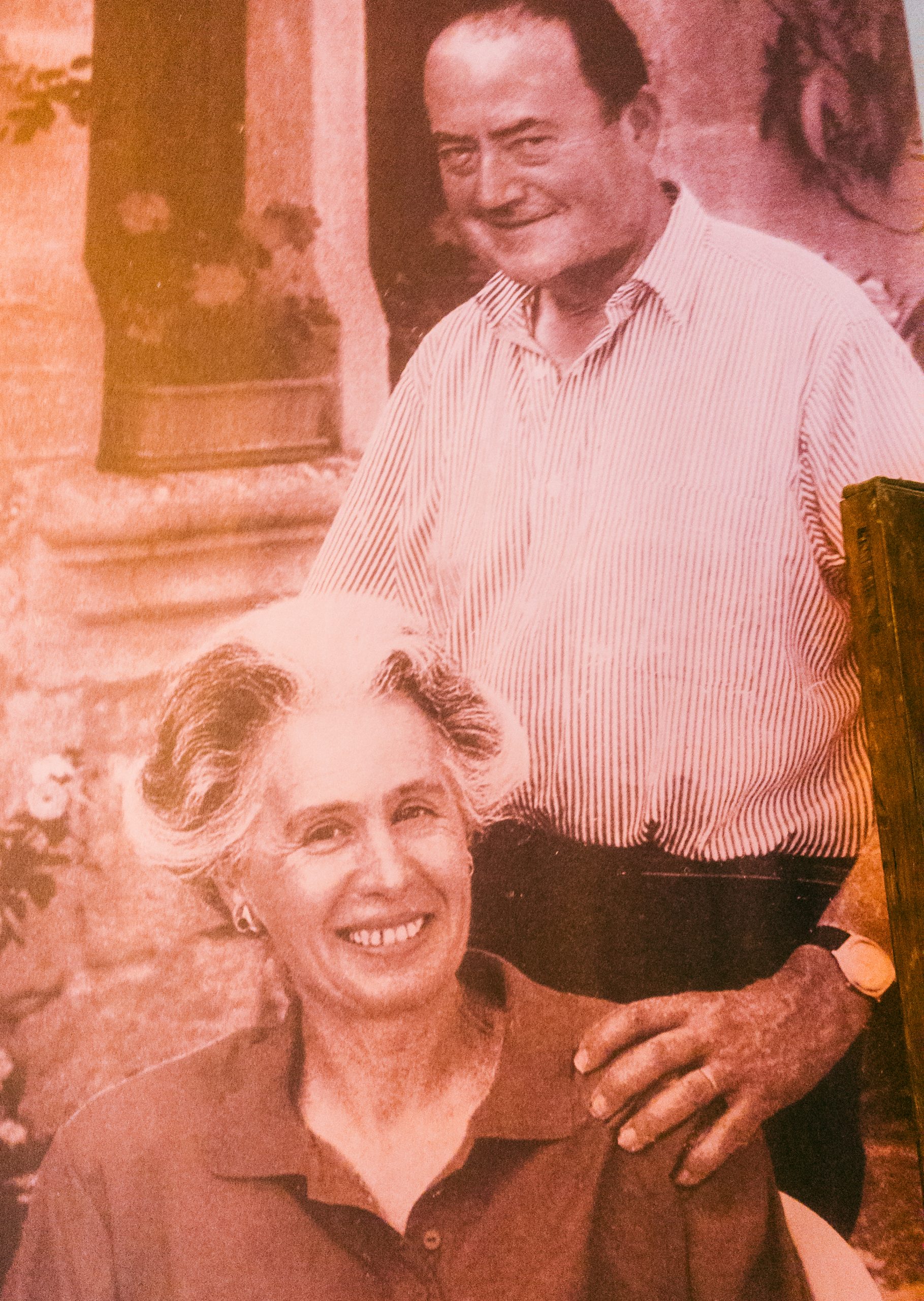
In any event, the family continued in charge, and by the late 1800s the castle needed major renovations. The Marquis Marc Roffignac spent the equivalent of 5 million Euros restoring it to its present state. He only had one child: Marie-Therese Louise Josephine de Carbonnier de Marzac (!), born in 1900. In 1920, she married Count Jacques de Montrbron, and they lived here in Puymartin until she died in 1982, after which the property passed to her children. Among the most interesting displays in the castle is the dining room set up as it would have been on Marie-Therese’s wedding day in 1920, with a faux cake and an intriguing menu featuring veal, chicken, and a 31-year-old bottle of Bordeaux wine.
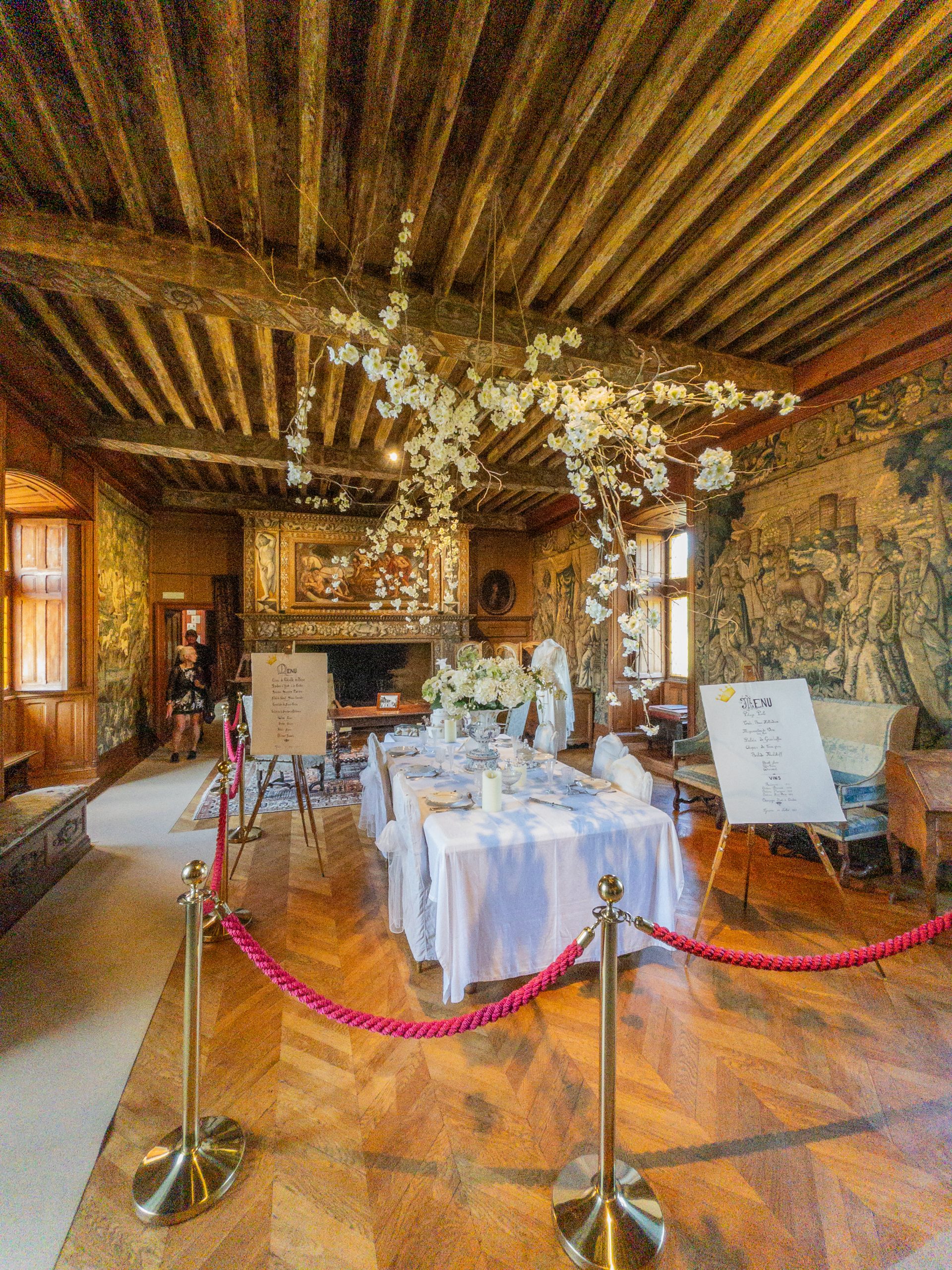
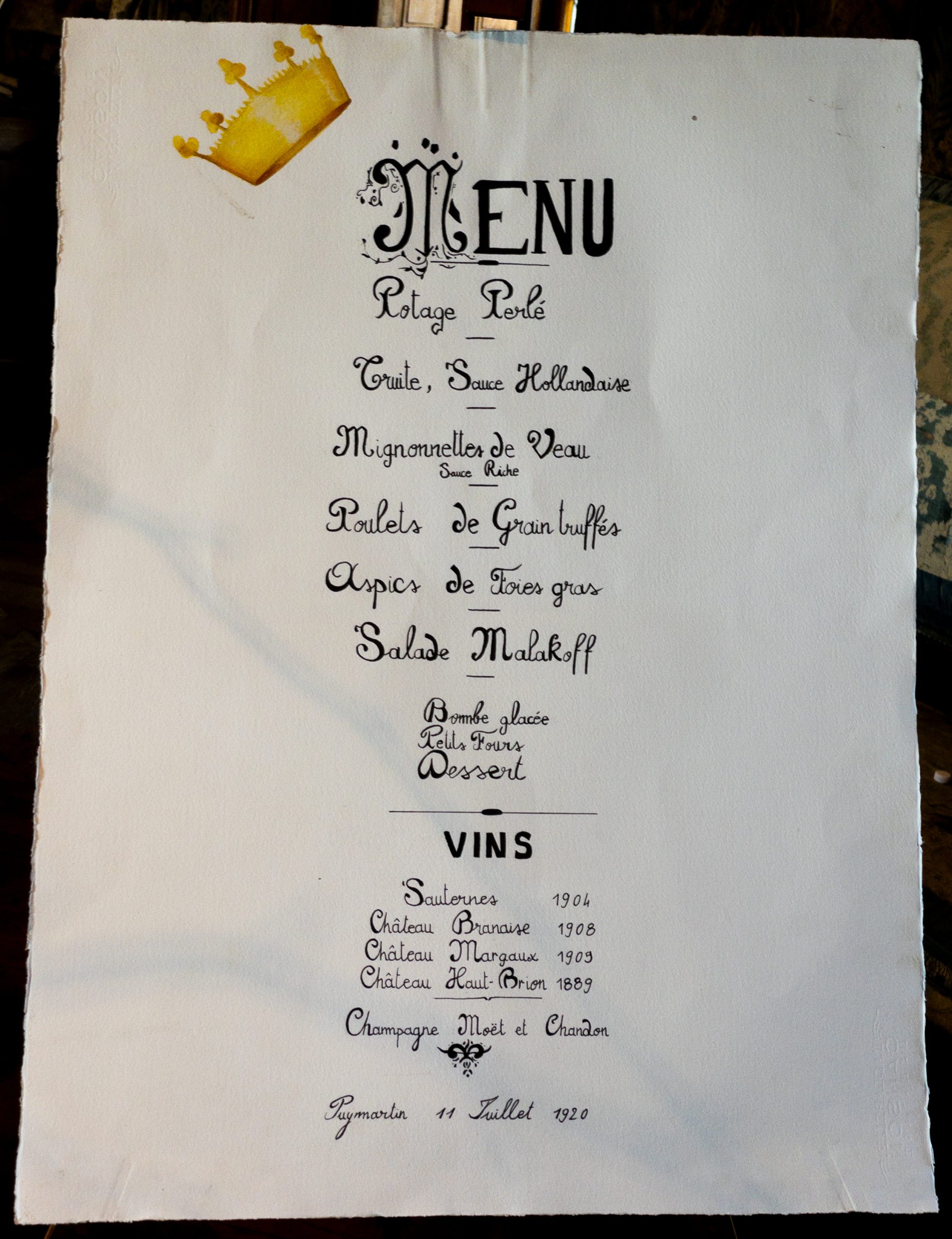
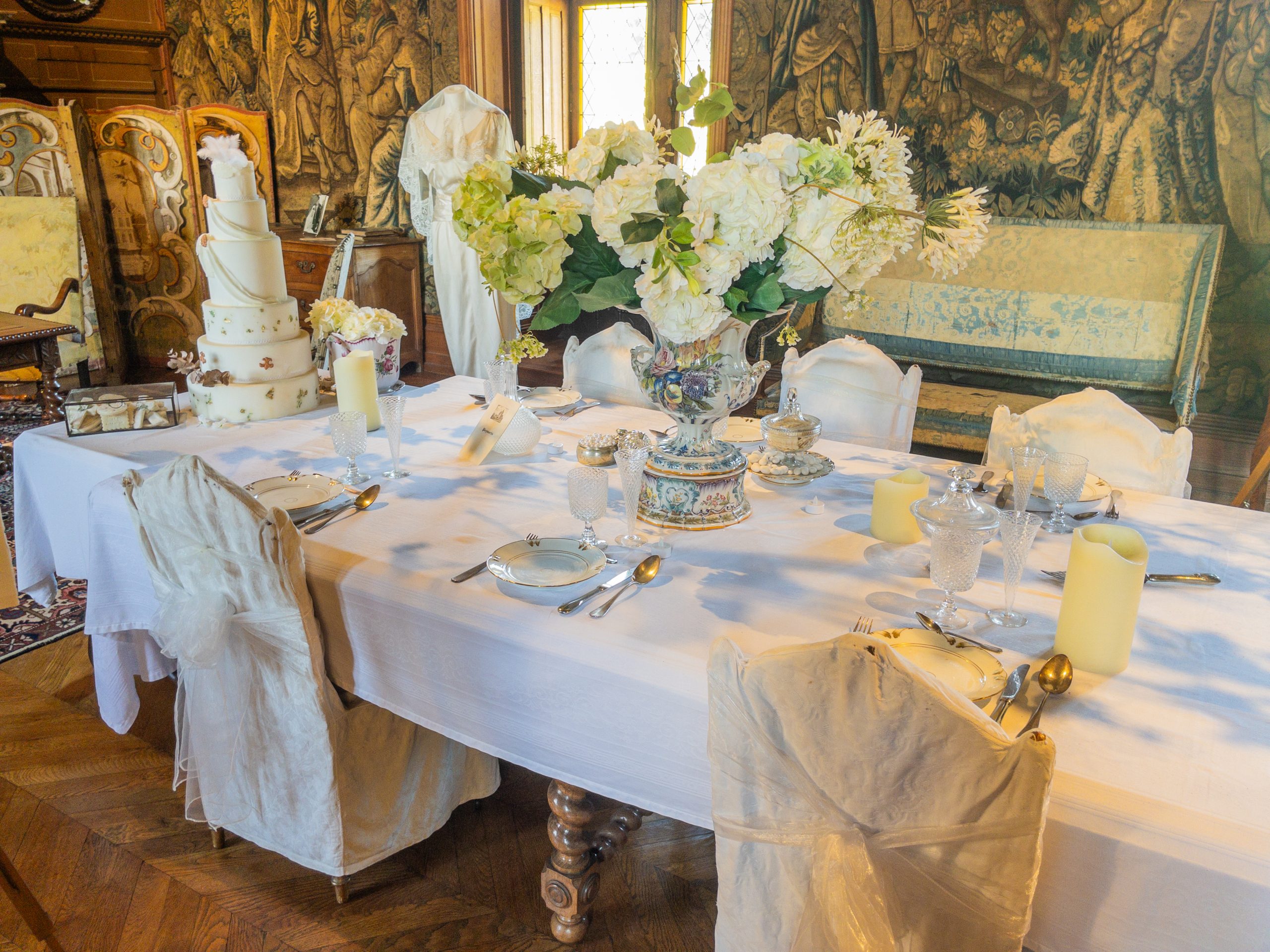
In fact, the overall feeling of a castle that has been lived in for so long is one of the things Karen and I appreciated most during our visit here. The furniture looks comfortable and well-used; there are family photos on display in several places; and even though the décor is rich and formal, it seems personalized and displayed on a human scale. We’ve found this feeling in a few other places: the Chateau d’Anjony, for example, and especially at Paretignat, and we are always happy to feel that you can get a sense of the personality of a place because it is a well-loved family home.
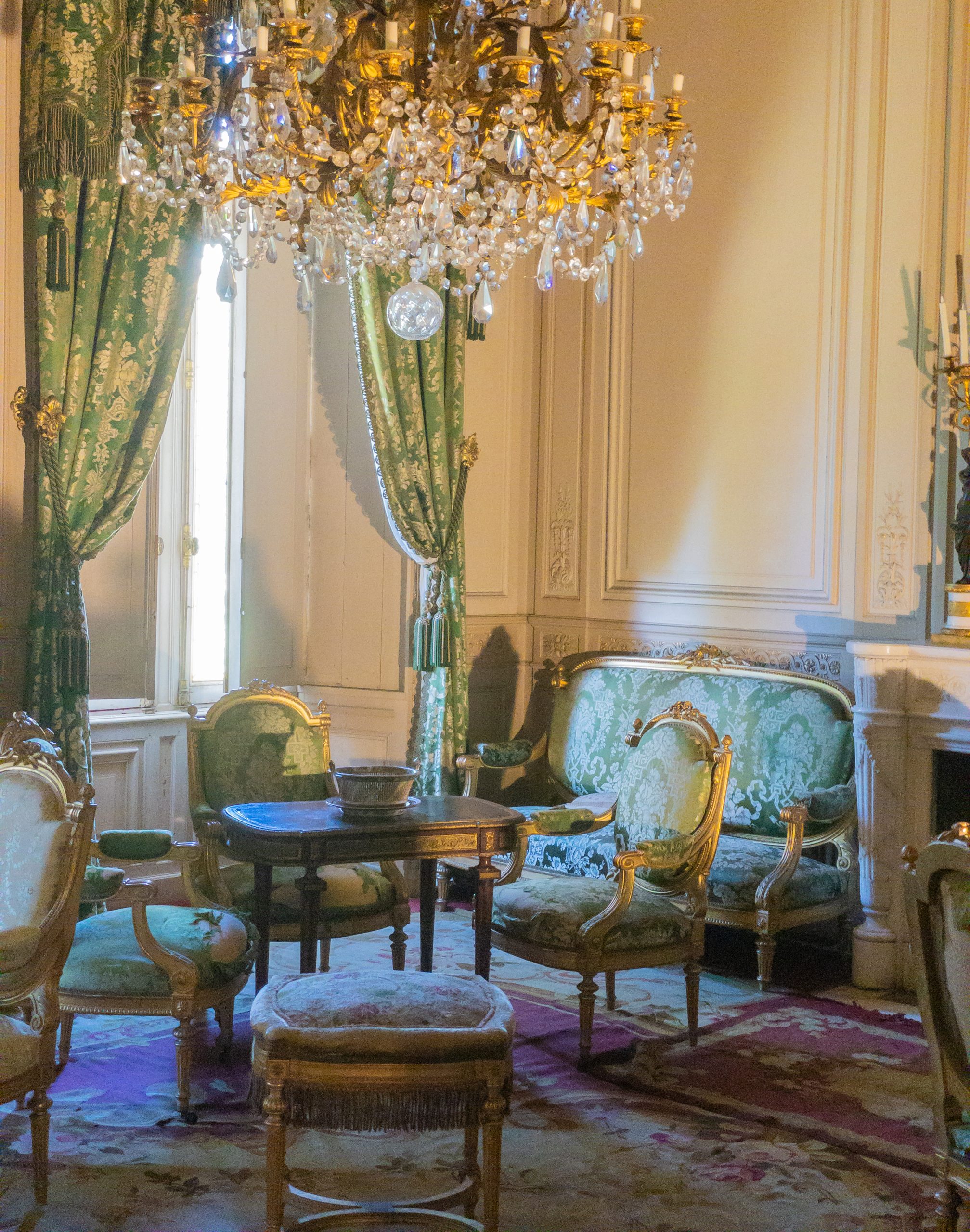
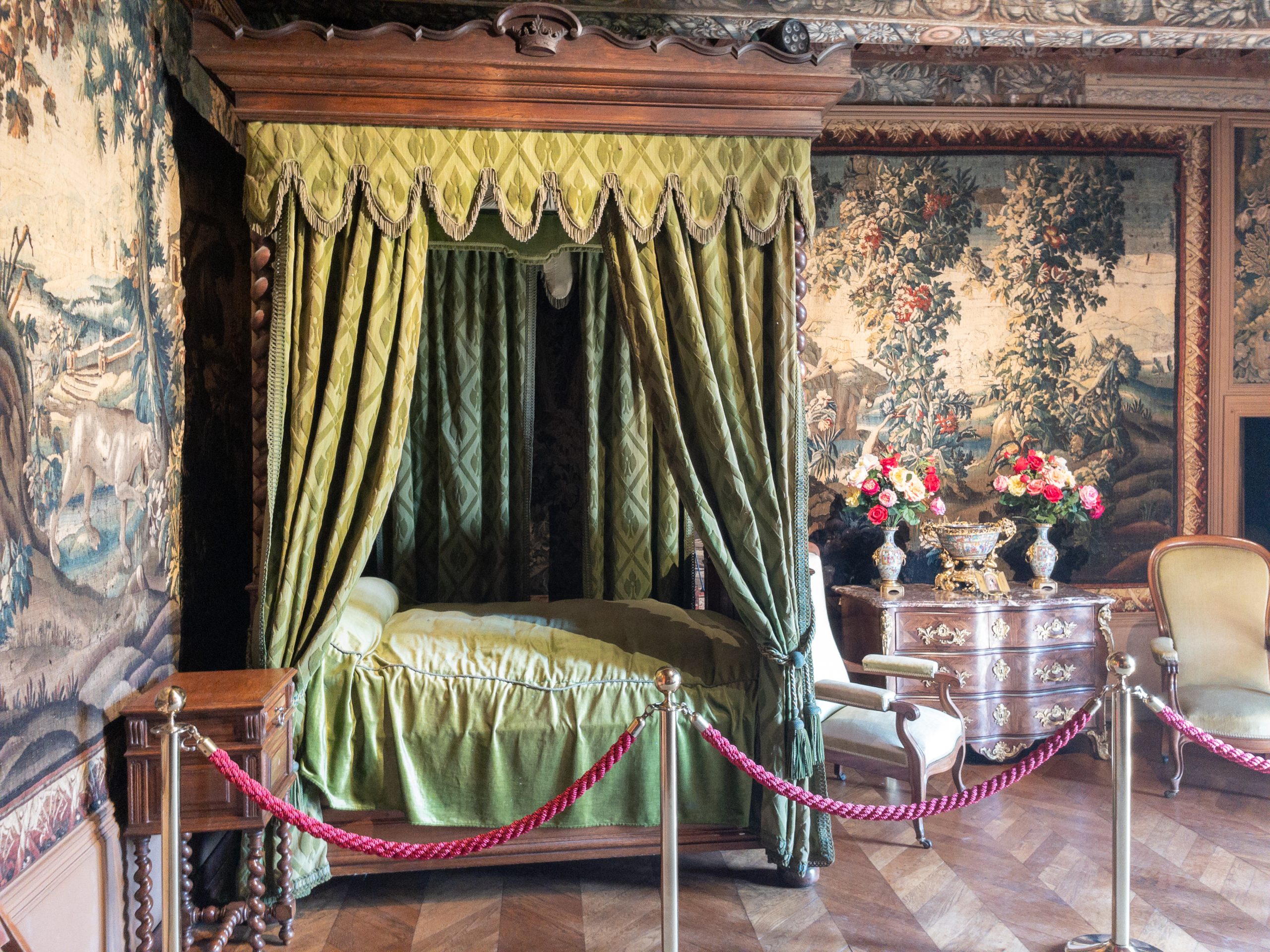
The legend of “The White Lady” of Puymartin
But if the “lived in” features of the castle were most appealing to us, they are clearly not the biggest draw bringing visitors to Puymartin today. For that, you must consult the appalling and captivating story of “La Dame Blanche” – the “White Lady” of the chateau.
Sometime in the 1500s, it is said, Jean de Saint-Clar returned to Puymartin after going away to war and found his wife, Thérèse, in the arms of another man. Jean killed the lover and locked his wife in a tiny, barren chamber in the castle; the door was sealed, and food and other necessities were delivered to the unfaithful wife through a small trap door. When she finally died after 15 years in this prison, Jean sealed her body up behind the walls. For centuries, it has been said that her ghost – “La Dame Blanche” - walks these halls and accosts the residents of the castle.
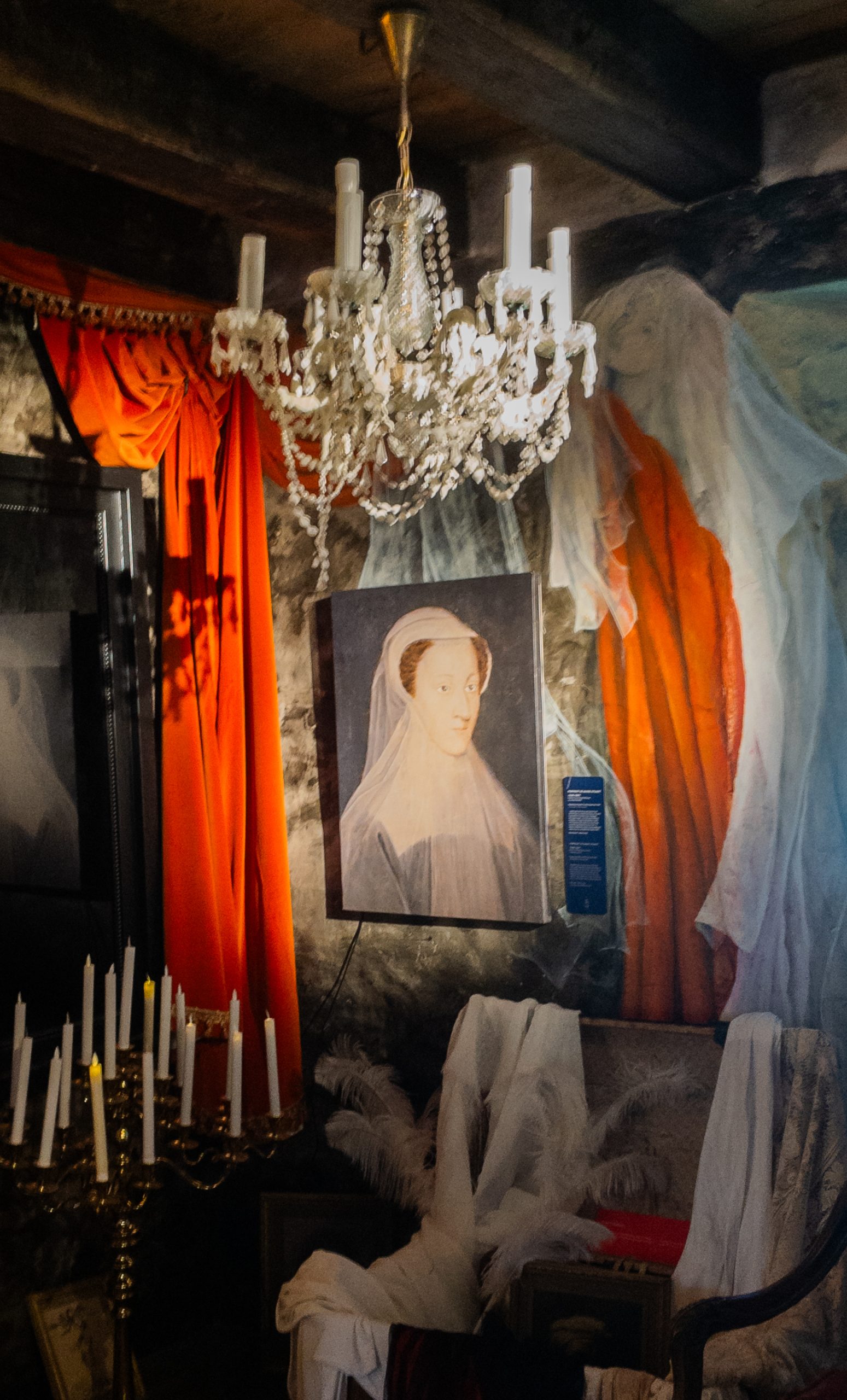
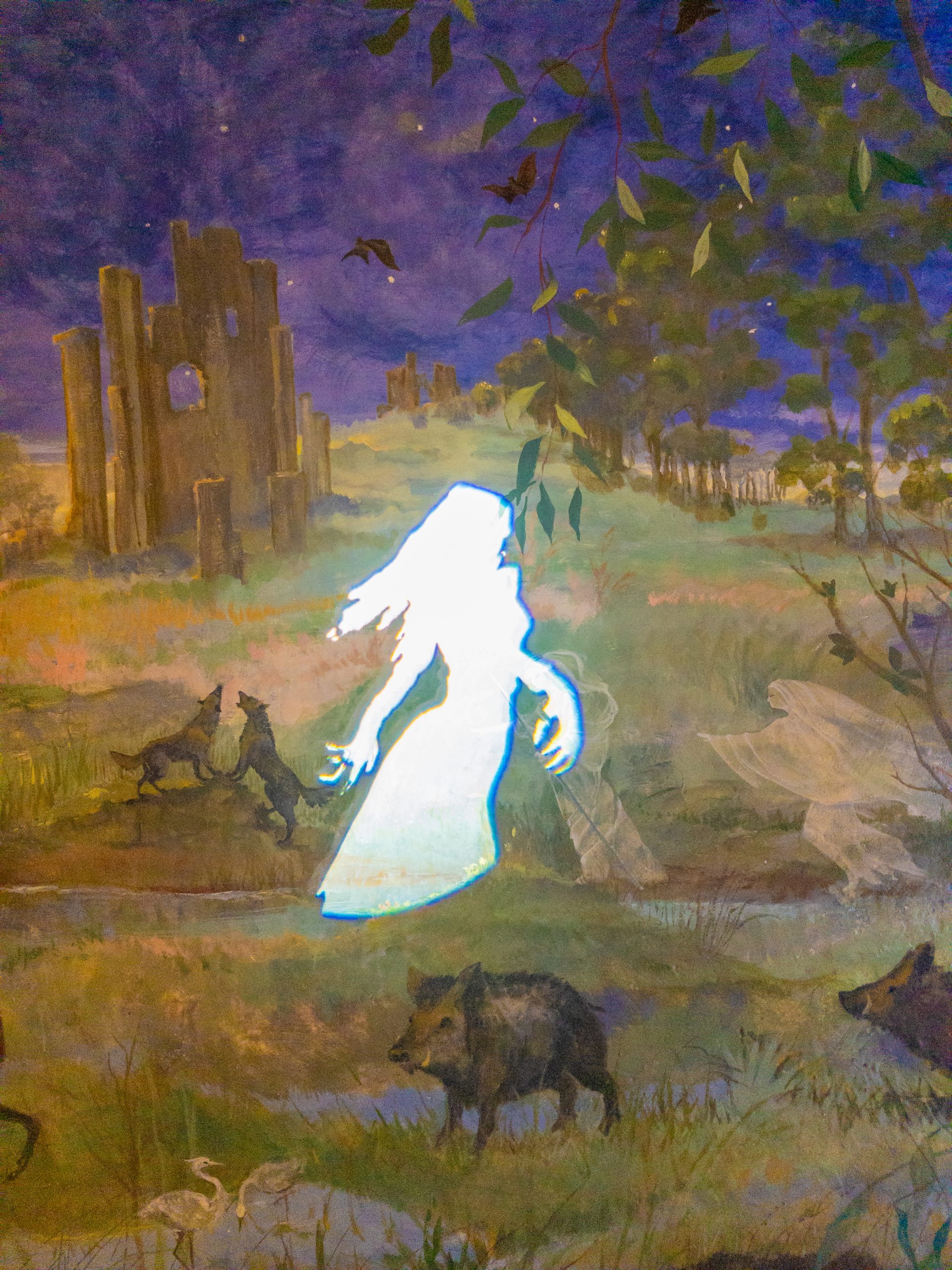
Thérèse’s room has been preserved, plain and stark, and it was easy enough for us to imagine the hell she must have lived through confined in this little prison. The current owner says he has never seen the ghost, but he is certain his father did and that he found the apparition “most disturbing.” In any event, the legend of the “White Lady” persists and the operators of Puymartin go out of their way to promote the story. There is a whole room devoted to images of ghosts, white owls, and other spooky elements, and several times a year they organize “escape games” devoted to the mystery of “La Dame Blanche”.
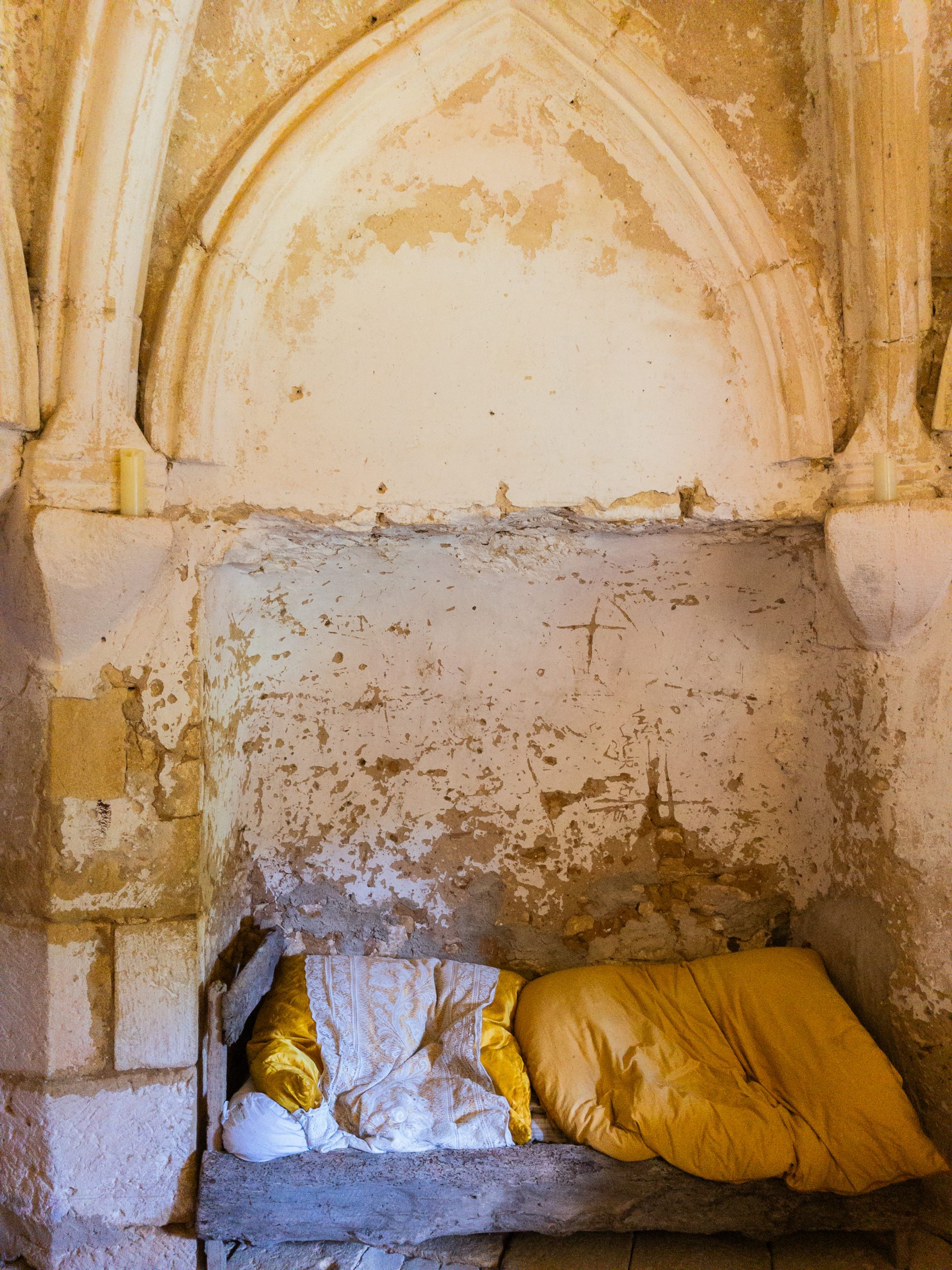
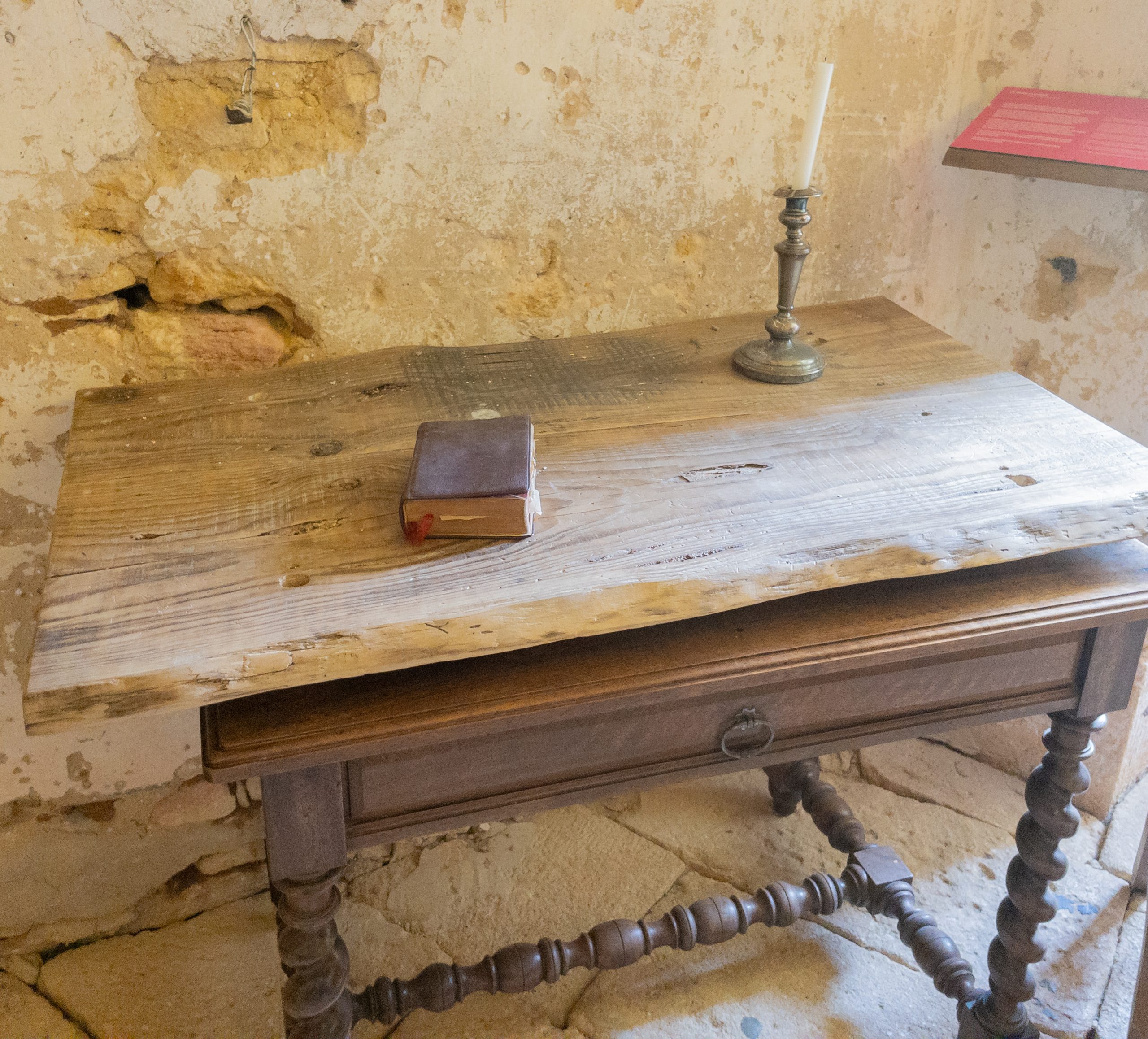
Visiting Puymartin today
Again, although the ghost story is an essential part of Puymartin’s presentation today, it is not the whole reason to see the castle. In addition to the family quarters and the recreated wedding dinner, there is a whole room devoted to painted wood panels done by Philippe Lemaire in the 1670s.
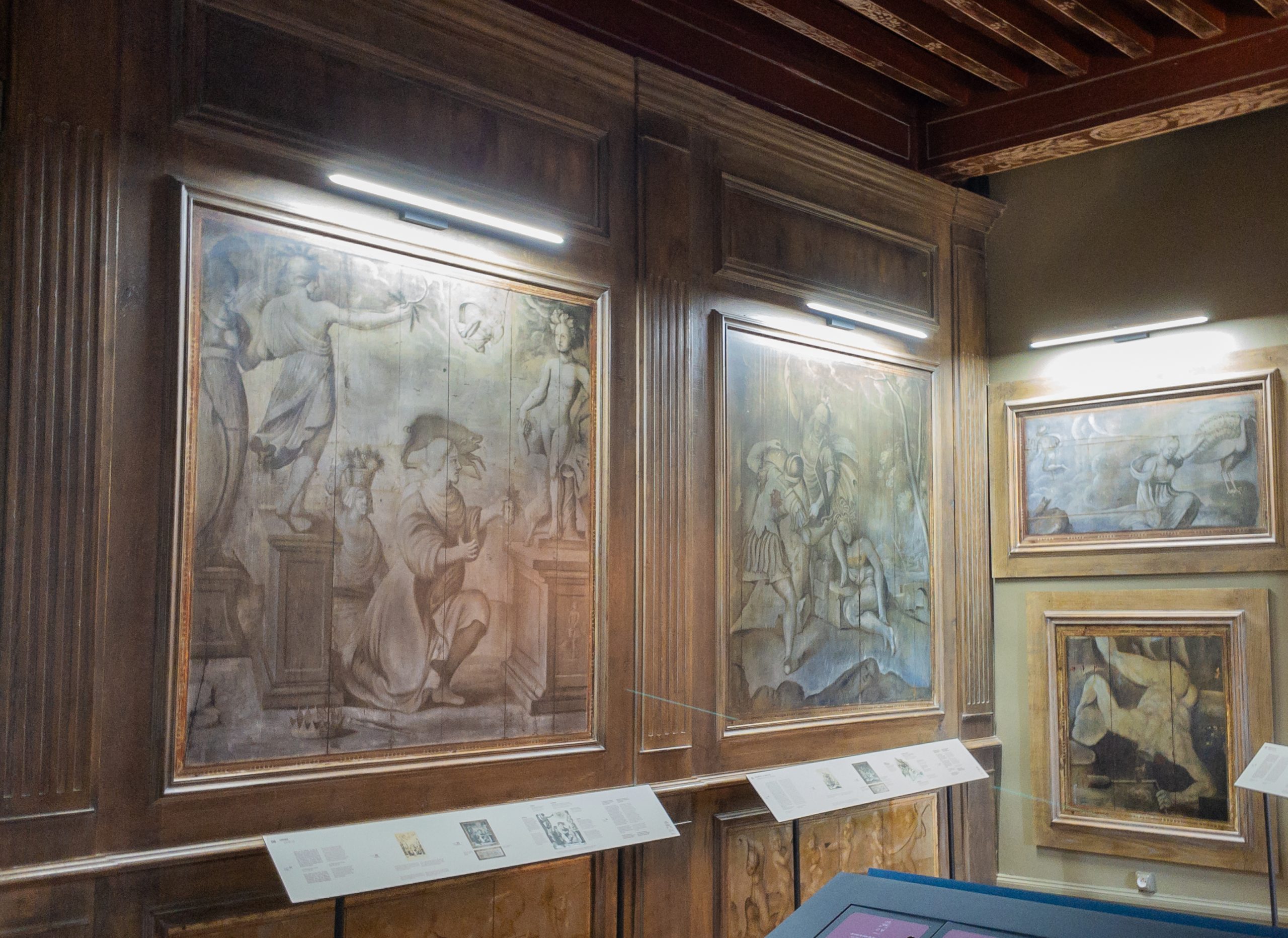
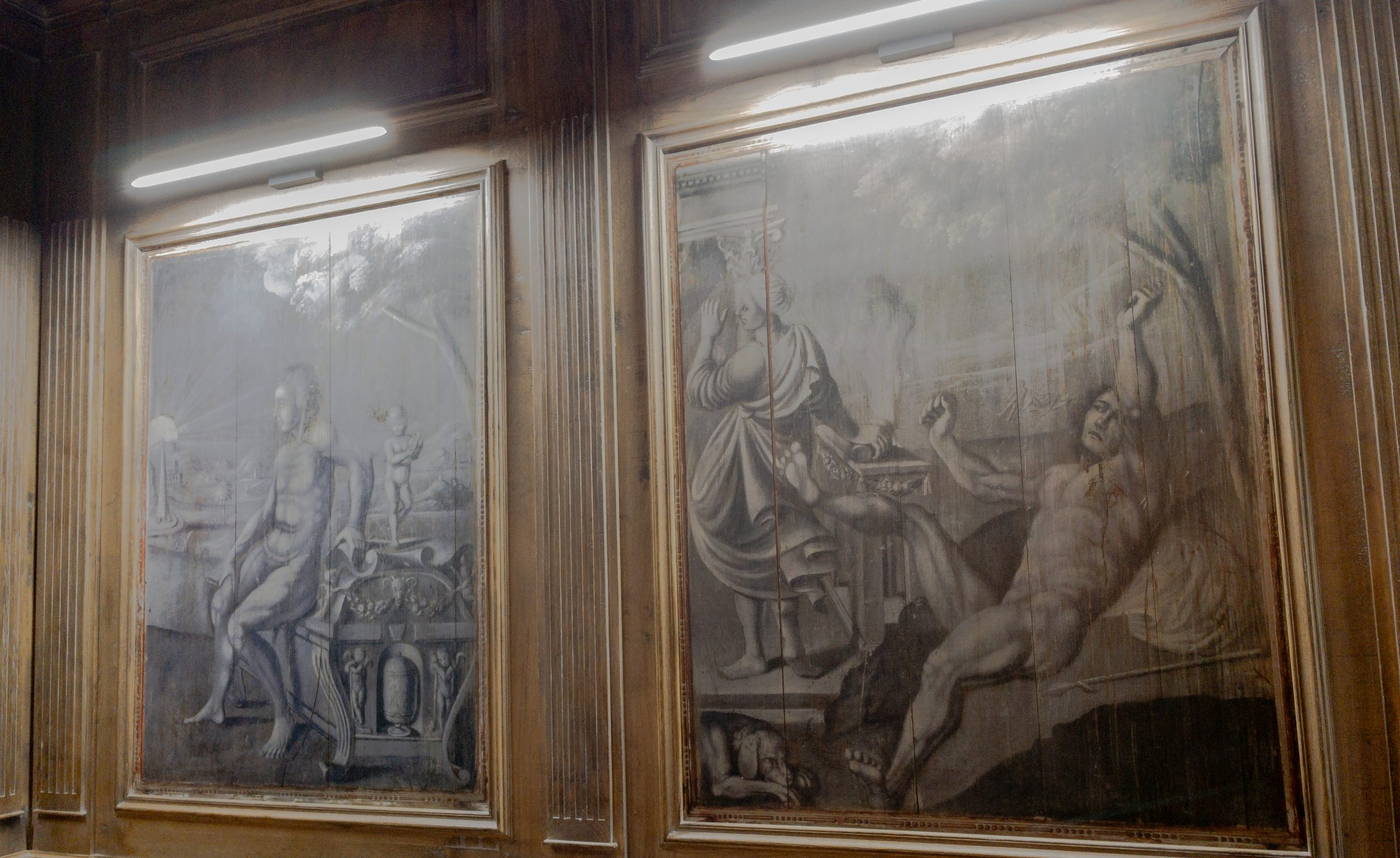
In fact, the originals of these 8 panels are in a small private “cabinet” not open to the public; these are reproductions on display because of the extraordinary subject matter and the extreme rarity of this kind of art in French castles. Each panel depicts a fantastically detailed allegory from ancient mythology; they are a kind of coded “propaganda”, laying out how a sovereign should be expected to behave, and nobles of the 17th century would have been expected to study and decode the panels for their own moral instruction.
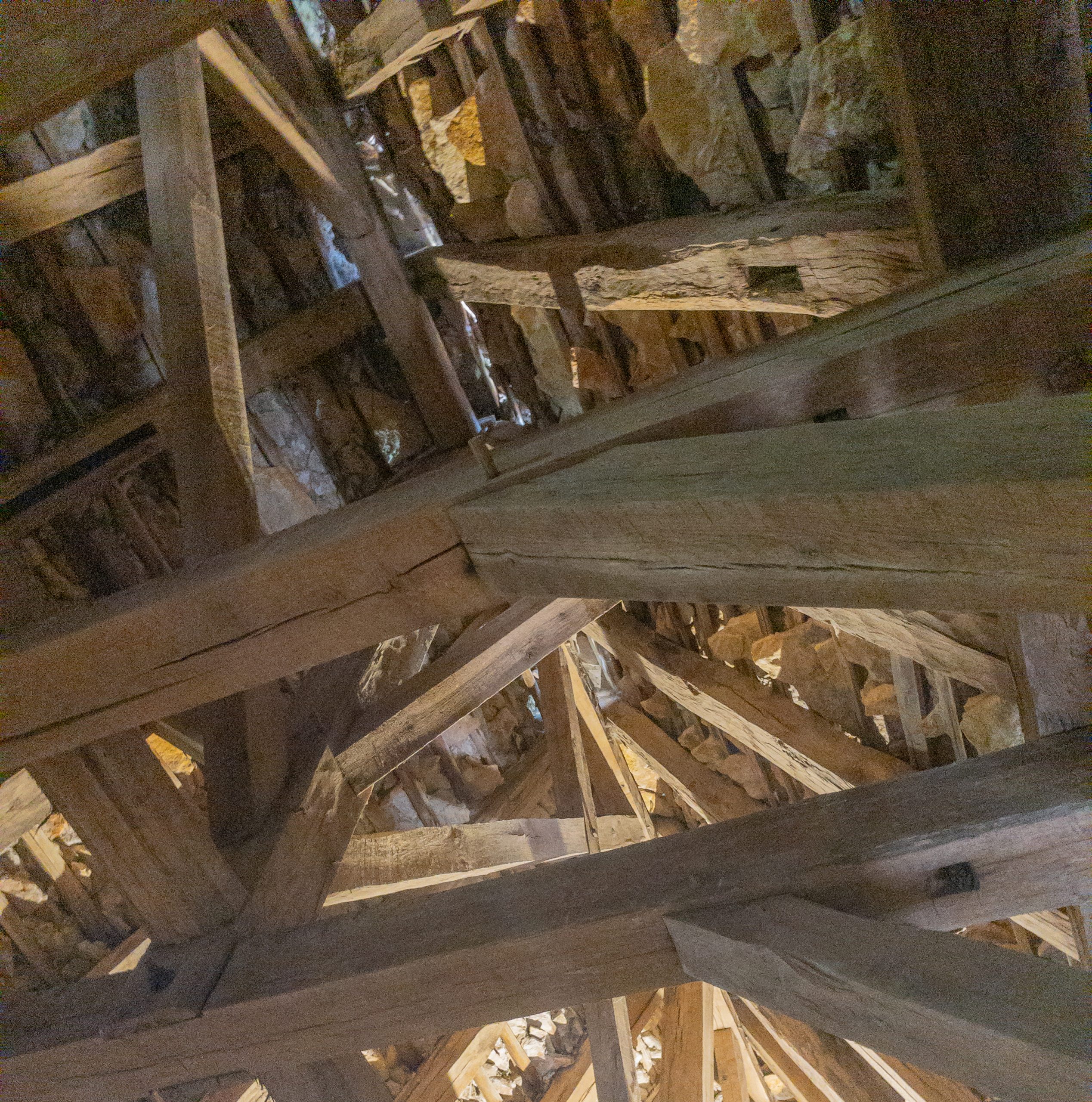
And if you’re more interested in the nuts and bolts – the infrastructure – of an old place like this, it’s worth a climb into the attic where you can see the lattice of heavy wood timbers holding up the roof. Even more interesting is the construction of the roof itself:
you can see how the large stones have been carefully stacked on top of the support timbers to cover the structure. It’s an extraordinary structure, and we marveled at how much maintenance must be required every year just to keep the whole roof in place!
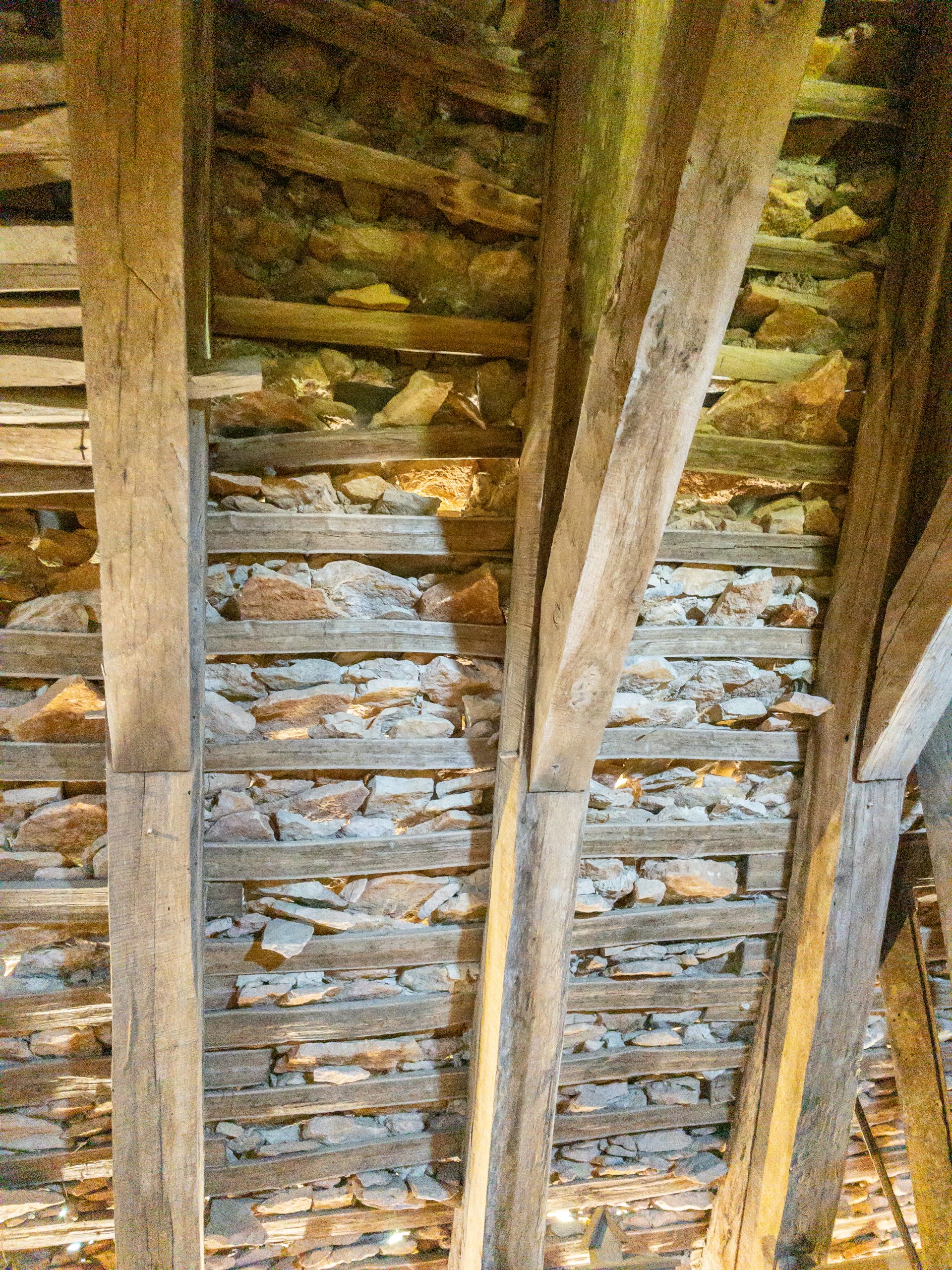
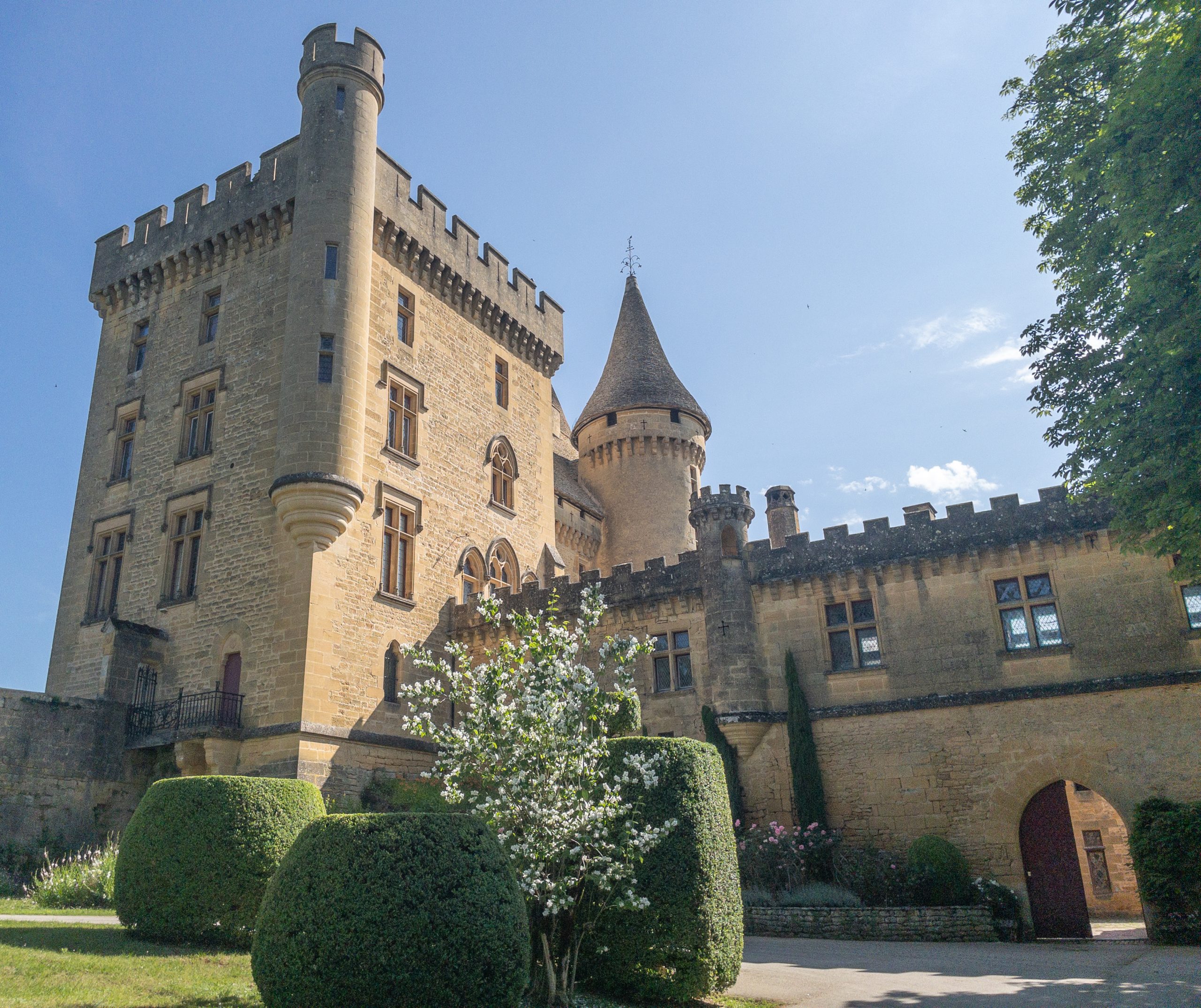
In short, if you’re already in or near Sarlat, it’s an easy drive to visit Puymartin and we certainly found it worth the trip. Self-guided tours are available in English, and guided tours in French are offered most mornings. In addition to the elaborate “Escape Game” events, the castle offers a “gourmet street food” event in August, a high-end chef’s dinner in September, and a murder-mystery night several times during the summer. You can even rent the whole place for a business conference, a wedding, or your own private concert.
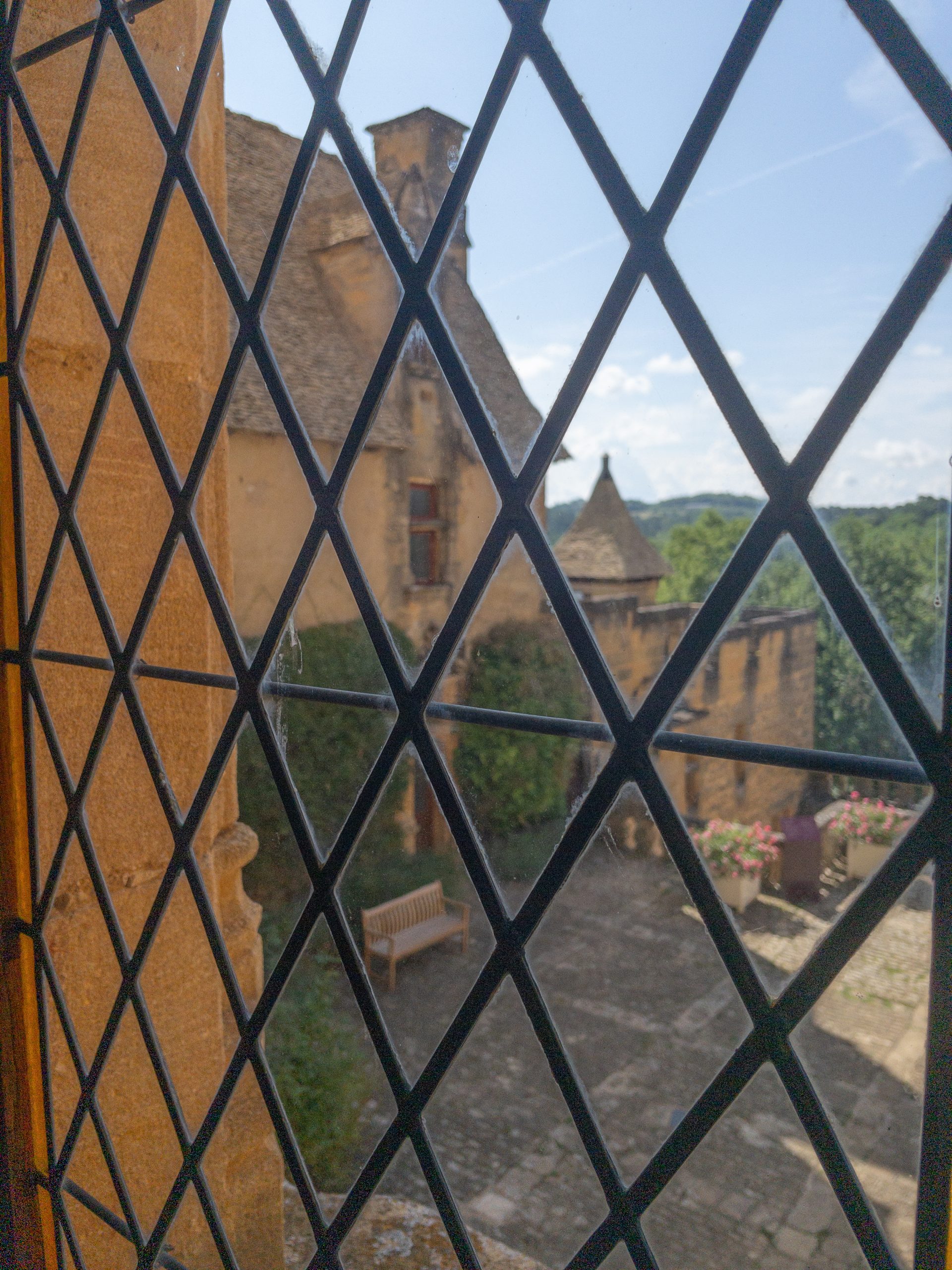
In any case, if you go, there’s a chance you might meet the “White Lady” yourself. But as the chateau’s site advises, “don’t be afraid, the Dame Blanche welcomes everyone who wants to discover her domain.”
Have you visited a place in France that has a similar claim to be “haunted”? What did you think – did you enjoy the experience? Please share your experience in the comments section below – and while you’re here, please take a second to share this post with someone else who is interested in the people, places, culture, and history of central France!
Unless otherwise noted, all photos in this post are copyright © 2023 by Richard Alexander
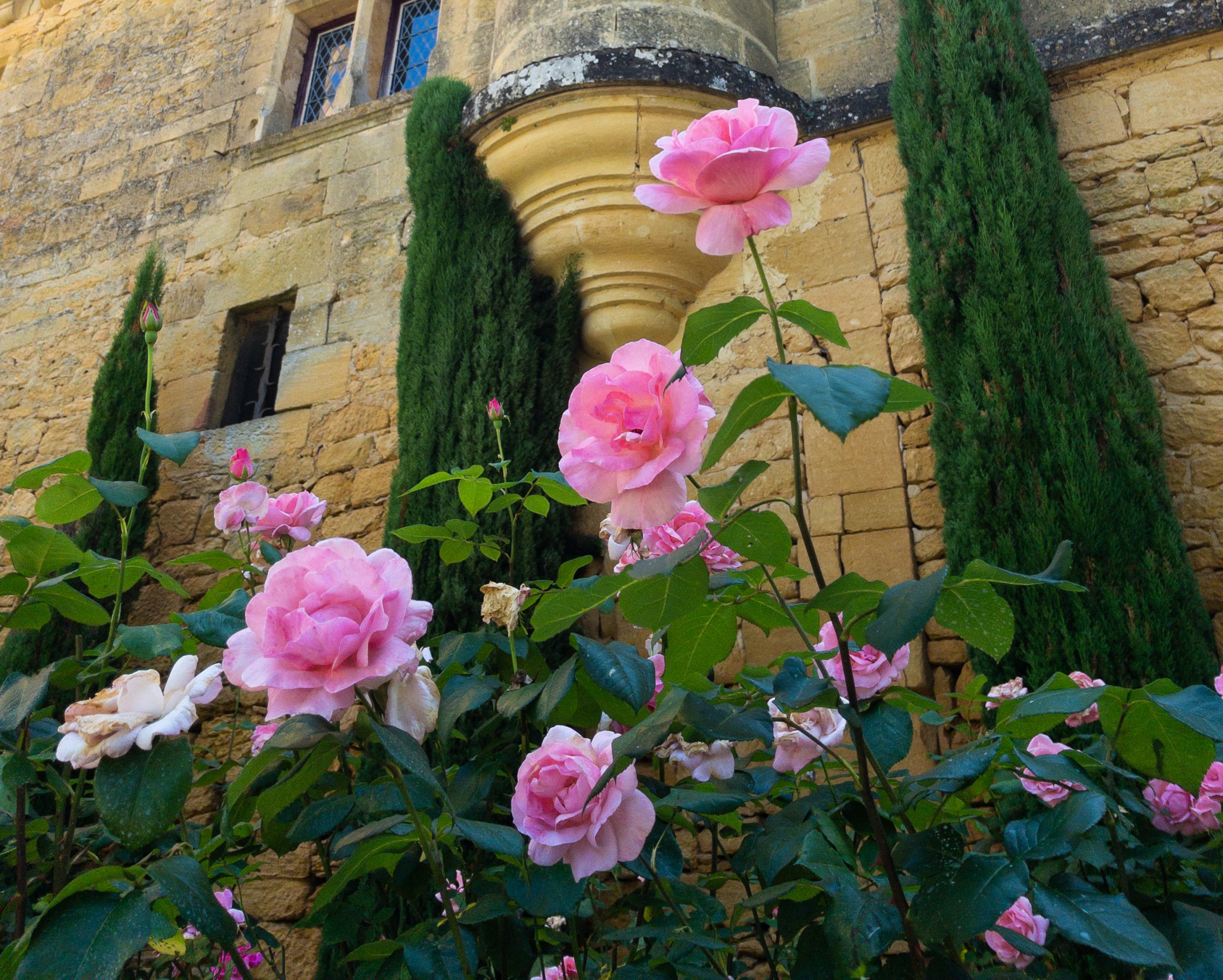
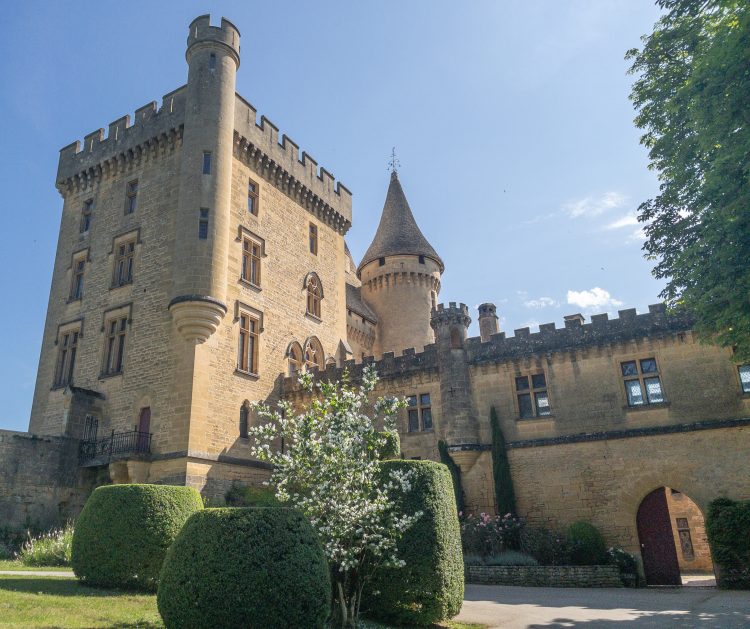

Interesting. We have a legend here of brothers who rode there horses off the ramparts rather than be taken in battle… so do several other local castles. And then there is the ‘White Lady’… goodness me, she gets around a bit. I am actually quite open minded about these sorts of things, but don’t much go for the tourist blurb that so many places exploit. Another thought-provoking post. Thanks for sharing.
their